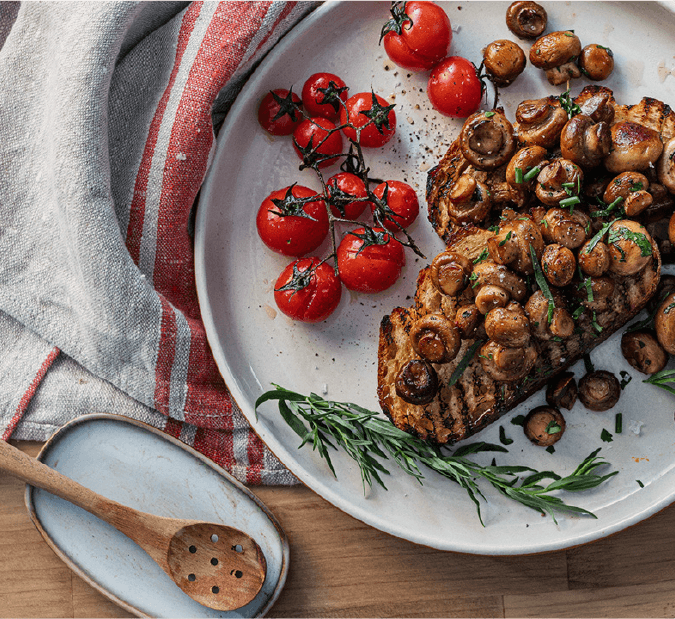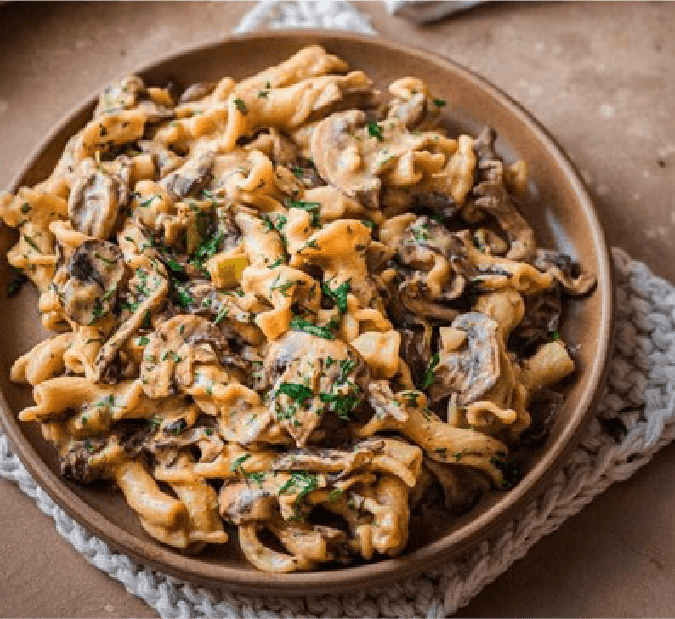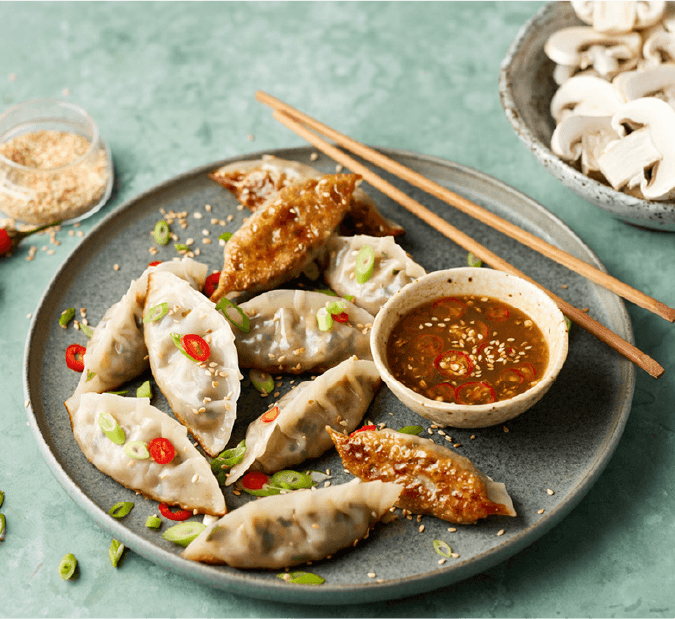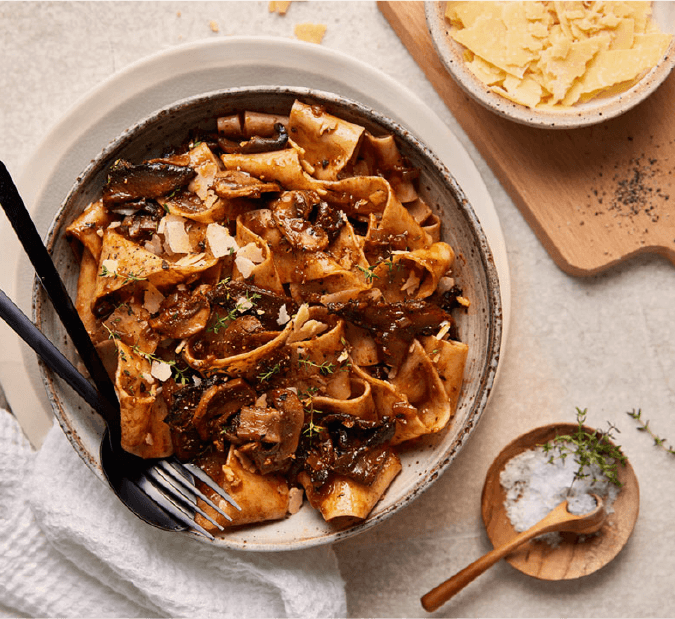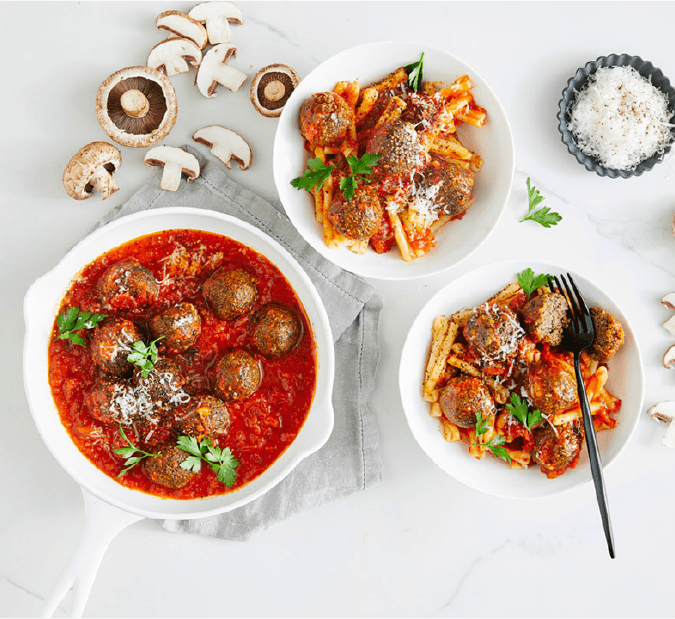RESOURCES

FUN FACTS
Some of these facts might just surprise you...
Mushrooms help the body in a myriad of impressive ways...
• Some Mushrooms are reported to be the safest recreational drug
• Mushrooms have less calories than Rice Cake
• Mushrooms are high in vitamin D
• Ancient cultures considered the mushrooms to be the plant of immortality
• Mushrooms posses the exclusive 5th taste sensation – Umami
• Mushrooms are considered by many to be natures prebiotic
• The worlds most expensive mushrooms can be worth thousands of dollars per kg
• 6% of all savoury foods contain mushrooms
• Mushrooms are the great hit with Vegans and Vegetarians
NUTRITION
At a glance...
RECIPES
From our kitchen...
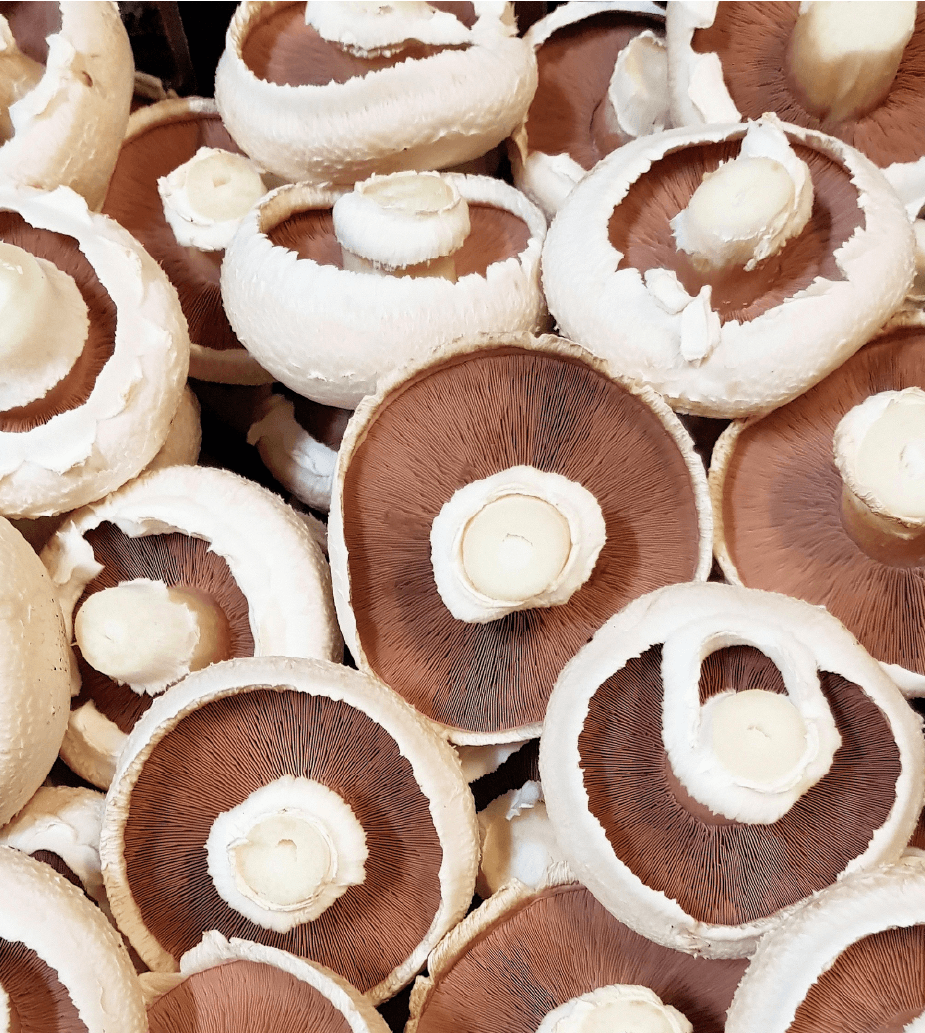
NUTRITIONAL INFORMATION
THE NEW SUPERFOOD
There are numerous health benefits of mushrooms and often they are used as a replacement for red meat and enjoy great popularity amongst every household. There are some cultures that believe that certain mushrooms have healing properties and have been used for centuries.
Yes, we know they look different, and to many they look beautiful. There are many varieties, some are extremely good for you and some not so good and yet there is even a selection that have been used in medicines since 206BC, so maybe they are not that new to the superfood category. But one thing that is for sure is that they are affordable and possibly in your fridge right now.
Mushroom Health and Nutrition
Mushrooms don’t just look good and taste nice. They are also packed full of vitamins including Vitamin D which assists with a healthy immune system.
They contain beta-glucans, which are dietary fibres (polysaccharides) strongly linked to improving cholesterol levels and boosting heart health.
Many species contain a multitude of antioxidants, such as L-ergothioneine, selenium, vitamin C, vitamin A and beta-carotene. All of these can help reverse the negative health effects of free radicals – unstable atoms that can cause damage to cells and lead to illnesses and ageing.
Further studies have also found that eating mushrooms may help to prevent respiratory infections, improve gut bacteria, provide gastrointestinal support, offer anti-inflammatory effects and even boost your mood.
That’s why they are considered as a superfood.
FUN FACTS
Did you know...
RECIPES
From our kitchen...
HISTORY OF MUSHROOMS
The word mushroom is derived from the French word for fungi, Champignon. Around 1650, a melon grower near Paris discovered mushrooms growing on his growth fertilizer; this is where the strand Agaricus bisporus, (white button mushroom) originated. This farmer decided to cultivate this new exotic delicacy commercially and to introduce it in exclusive Parisian restaurants. To say it was a hit would be an understatement, and demand for this new exotic food was high. It was at that time that the mushroom was given the nickname ‘Parisian mushroom’.
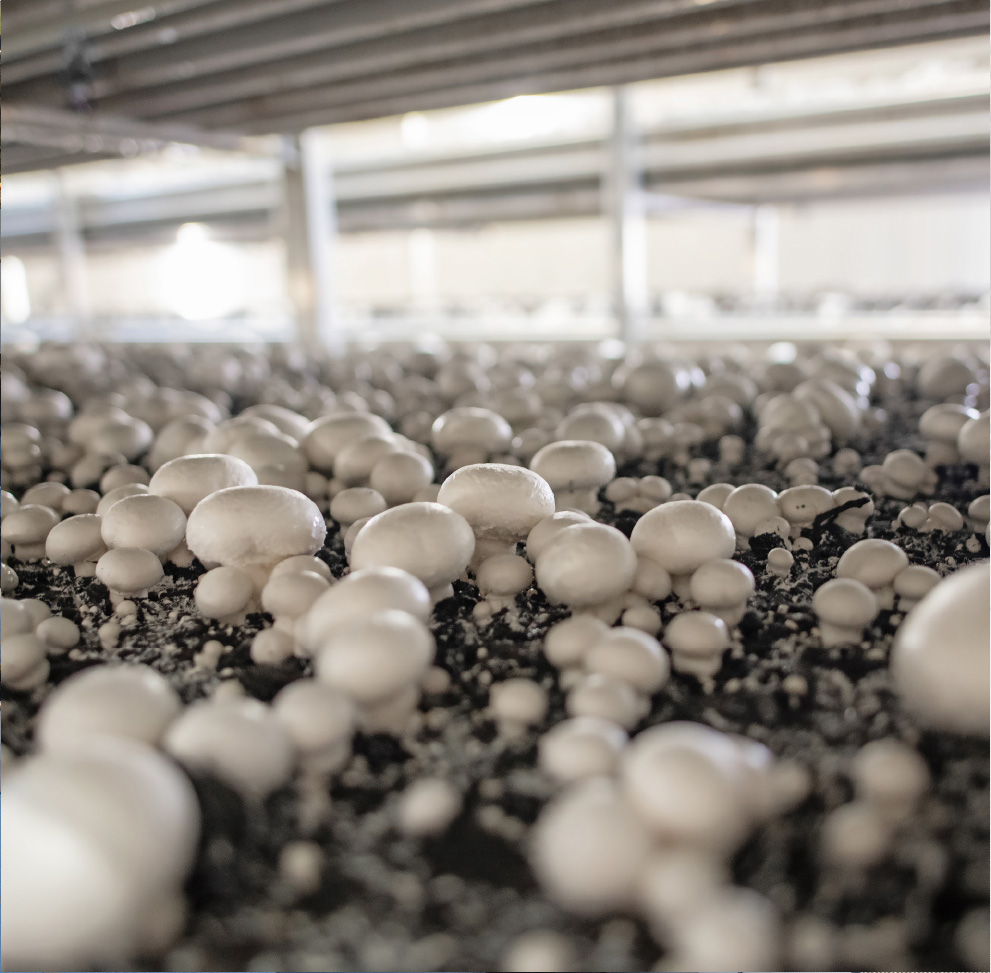
Later on, a local French gardener from the town of Chambry discovered that the nearby underground caves had the perfect climate with just enough cool temperature and damp in the environment for cultivating mushrooms. This was reputed to be one of the first large-scale mushroom cultivations developed. Who would have thought that the French pioneers would be responsible for a global superfood.
Obviously, due the immense popularity of the Parisian mushrooms word spread across the borders and across the seas and reached the Netherlands where it was embraced. It was a staple dish served at feasts and formal occasions and mainly by the upper class. In the early 19th century this exclusive delicacy was growing in popularity and demand continued to soar.
It was not until after the 1900s that mushrooms were cultivated on a large-scale in the marl mines in Limburg, Netherlands. In the early years, mushroom cultivation was not a real science as various attempts to generate larger and more profitable harvests were often met with entire crop failing to grow and many pioneers losing fortunes in the pursuit of creating the best possible growing conditions. Mushrooms were not an everyday dinner dish and were still perceived to be available only to the elite and upper classes. However, ever since then, better and more effective methods have been developed and there has been a huge increase in mushroom cultivation. Netherlands remains at the forefront for mushroom cultivation with much of their learnings and techniques used around the world to this day in just about every country.
Australia joined in the frenzy of commercial mushroom growing and cultivation back in 1933 in disused railway tunnels under the city of Sydney – including the incomplete Circular Quay to St James line. Its hard to imagine now, but back then under the heart of the CBD was a thriving mushroom farm. In the late 1930’s the mushroom industry moved outdoors to the Hawkesbury district when growers created the first raised beds in open fields, covered by nothing more than straw and hessian bags. It was hard going, with low yields and fragile mushroom crops at the mercy of Australia’s weather extremes. Relying on the expertise and hard work of newly arrived migrants, the Australian mushroom industry became a reality. As one of the most delicate foods easily prone to bruising, sun burn and temperature extremes you can only imagine how many farmers lost everything trying to grow the elusive white mushrooms. Those that survived and thrived continued to improve their growing methods and harvest techniques, learning expensive lessons and remaining focused on the delivering the best available mushrooms.
As is commonplace with dedicated growers, the focus on continuous improvement, innovation and best practice techniques saw the overall adoption of the Dutch mushroom expertise along our farms. Often information was slow in getting to the farms and although adaption may have been slower in some aspects the robust methods of the19th Century Europeans proved valuable to those that followed their principles. As mushrooms were very much a seasonal crop here in Australia, production only ever occurred during the cooler months as our harsh summers were no match for the fragile mushrooms. The risks were high, the growers were dedicated and families often struggled to produce saleable crops. The solution as it happened was to go back indoors and less harsh environments.
By the 1970s, most mushrooms eaten in Australia were sold in cans. Can you believe that!!, mushrooms in a can, no thank you very much!
Today, we expect only the premium quality fresh mushrooms to make it to our dinner tables. Not a can opener in sight. We have access to a range of exotic breeds available for varying cuisines and they vary in appearance almost as much as we do as people. The most common and by far the most popular of all breeds is the wonderfully enticing white mushrooms.
Mushrooms grown in Australia today are carefully grown by experts who have decades of expertise in all the elements that contribute to successful farms. They are well educated on soils, climate, air quality, advanced hydroponic watering systems, technology, compost temperature and quality – to name a few. And of course as the gentle little mushrooms are still harvested by hand, the growers are certainly people orientated and provide great employment opportunities for many people across the country.
